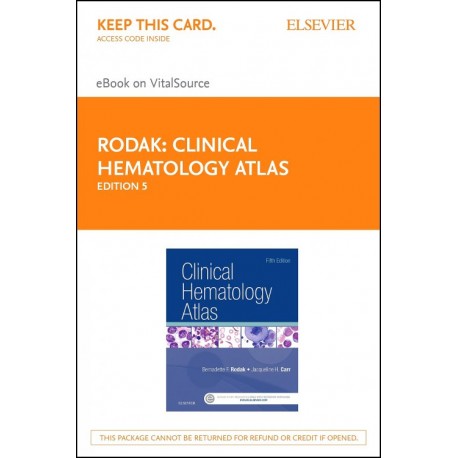Sin productos
Precios están sin IVA
Producto añadido correctamente a su carrito de compras
Hay 0 artículos en su carrito. Hay 1 artículo en su carrito.
¡Producto agregado con éxito a la cotización!
 Ver más grande
Ver más grande
En Existencia
Clinical Hematology Atlas (ebook)
9780323322508
Autor : Rodak, Bernadette F.
Materia : E-books
Editorial : ELSEVIER
Año : 2015
Edición : 5
Idioma : Inglés
ISBN : 9780323322508
Paginas : 296
Más información
Ensure you are accurately identifying cells at the microscope with Clinical Hematology Atlas, 5th Edition. An excellent companion to Rodak's Hematology: Clinical Principles & Applications, this award-winning atlas offers complete coverage of the basics of hematologic morphology, including examination of the peripheral blood smear, basic maturation of the blood cell lines, and information on a variety of clinical disorders. Nearly 500 photomicrographs, schematic diagrams, and electron micrographs vividly illustrate hematology from normal cell maturation to the development of various pathologies so you can be sure you?re making accurate conclusions in the lab.
- Schematic diagrams, photomicrographs, and electron micrographs are found in every chapter to visually enhance understanding of hematologic cellular morphology.
- Smaller trim size, concise text, and spiral binding make it easy to reference the atlas in the laboratory.
- Chapter on normal newborn peripheral blood morphology covers the normal cells found in neonatal blood.
- Chapter on body fluids illustrates the other fluids found in the body besides blood, using images from cytocentrifuged specimens.
- The most common cytochemical stains, along with a summary chart for interpretation, are featured in the leukemia chapters to help classify both malignant and benign leukoproliferative disorders.
- Chapter featuring morphologic changes after myeloid hematopoietic growth factors is included in the text.
- Morphologic abnormalities are covered in the chapters on erythrocytes and leukocytes, along with a description of each cell, in a schematic fashion.
- User resources on the Evolve companion site feature review questions, summary tables, extra images for comparison, and extra cells for identification to further enhance their learning experience.
- NEW! Appendix with comparison tables of commonly confused cells includes lymphocytes versus neutrophilic myelocytes and monocytes versus reactive lymphoctyes to help users see the subtle differences between them.
- NEW! Glossary of hematologic terms at the end of the book provides a quick reference to easily look up definitions.

